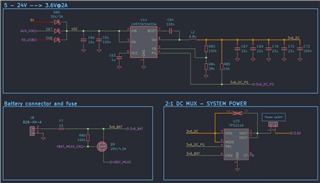Tool/software:
Hello,
on a recent design using the TPS2116, we experience a unusual issue. IN1 is connected to the output of a buck converter. The PR1 pin is connected to the power good output of the buck regulator. IN2 is connected to a primary lithium battery. The device and circuit start working perfectly on a fresh board (no reverse leakage, no significant quiescent current etc.) but after some time (some after weeks some after days) a significant current starts going from the battery (IN2) to the output of the buck converter (IN1). This was determined by isolating the circuits so only the TPS2116 is the possible culprit. The current on some devices is in the tens and some are in the hundreds of uA which drains the battery prematurely. Both the battery and the buck regulator operate at 3.6V. The battery serves as a backup source when no input DC voltage is available.
Any thoughts on how to mitigate this issue and what could cause it? Both inputs are protected and reverse voltage protected so no possible way for that to cause any damage, especially in a controlled environment and after some undefined time.
Thanks in advance.




